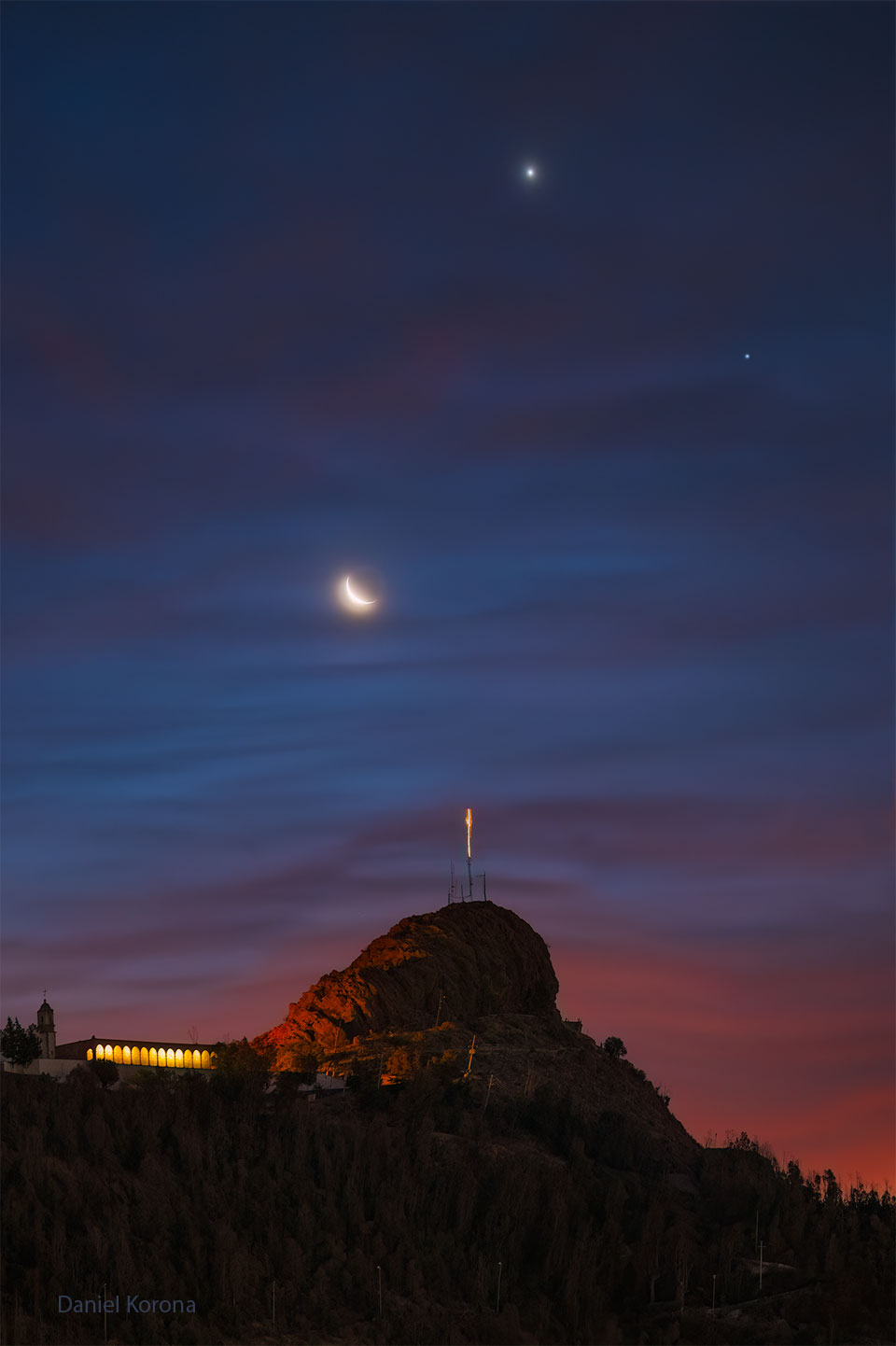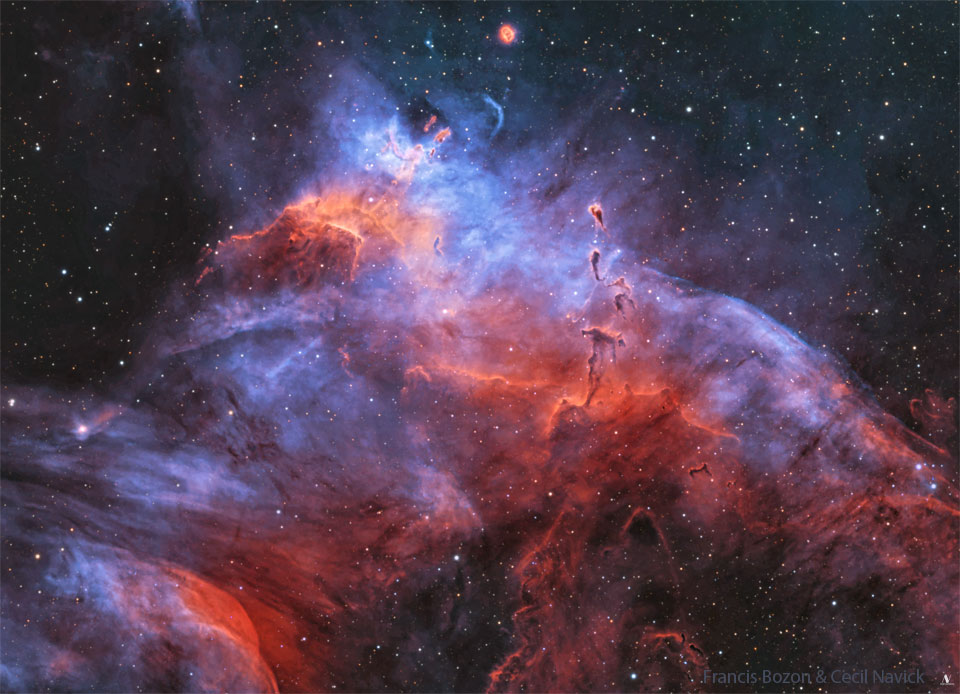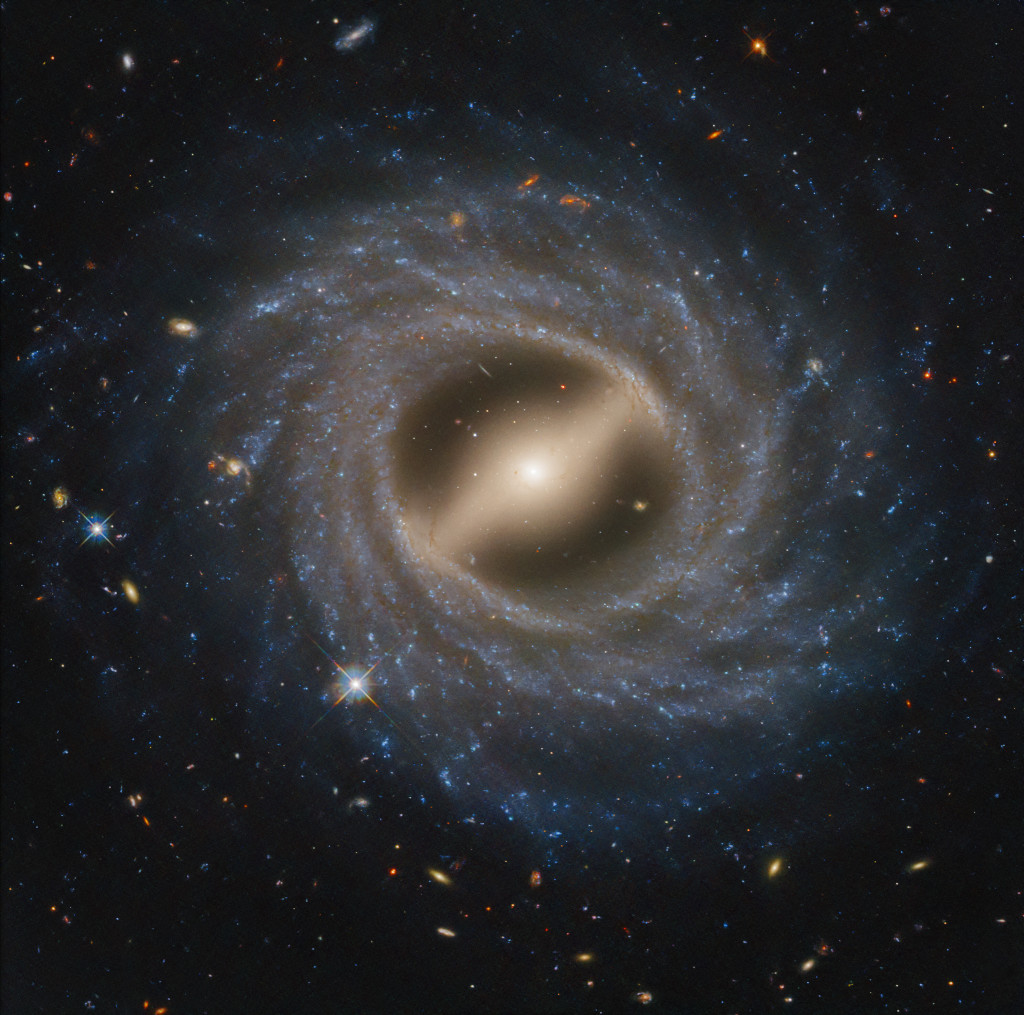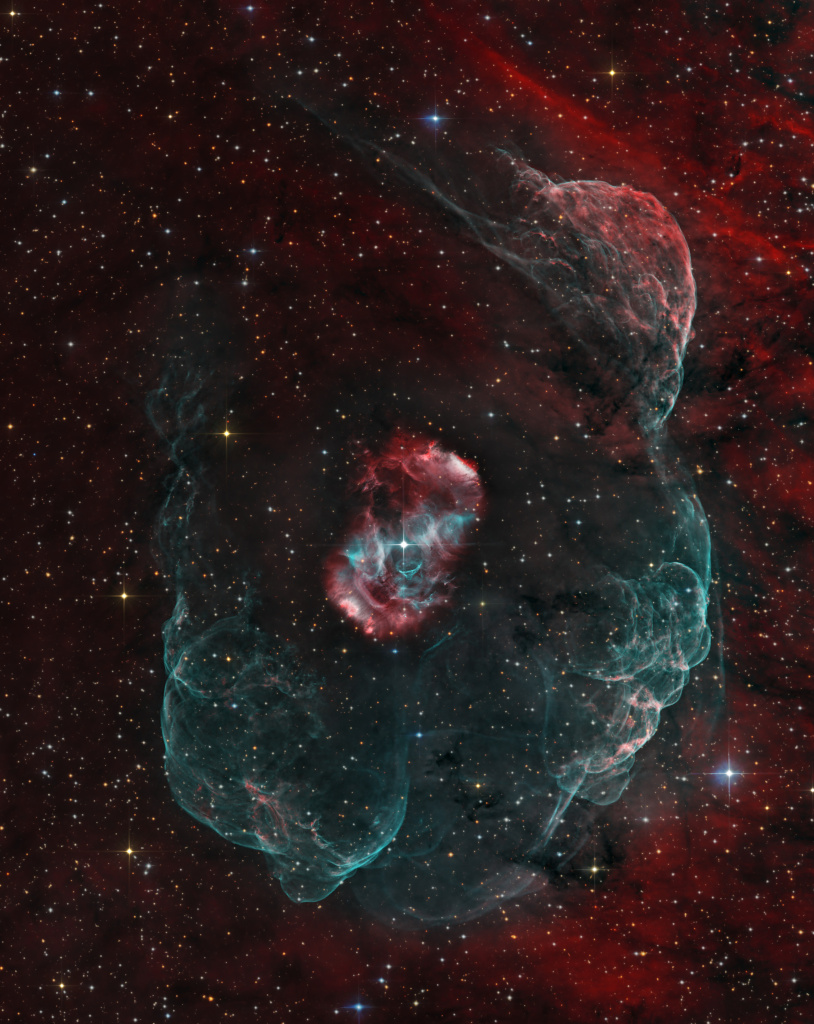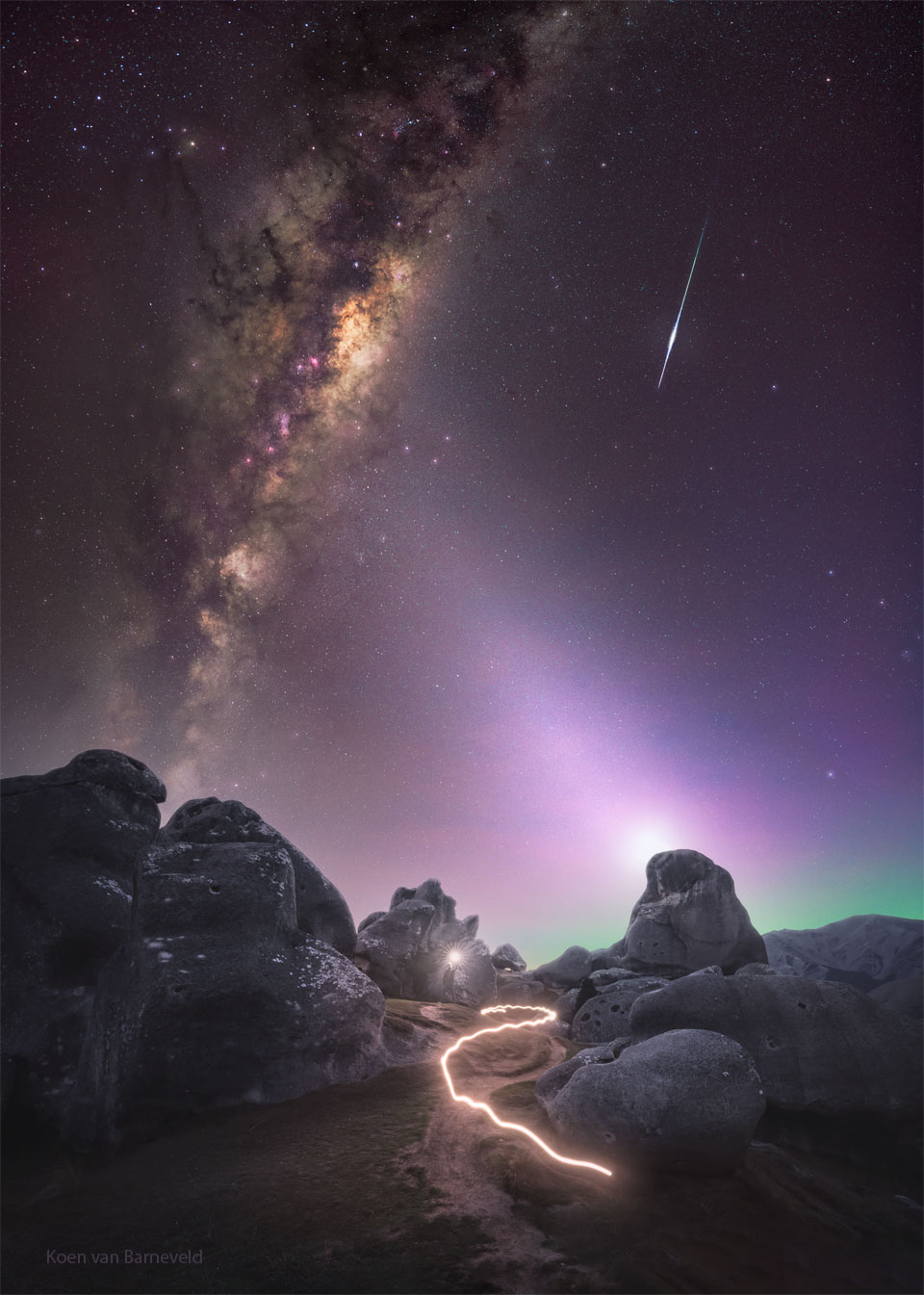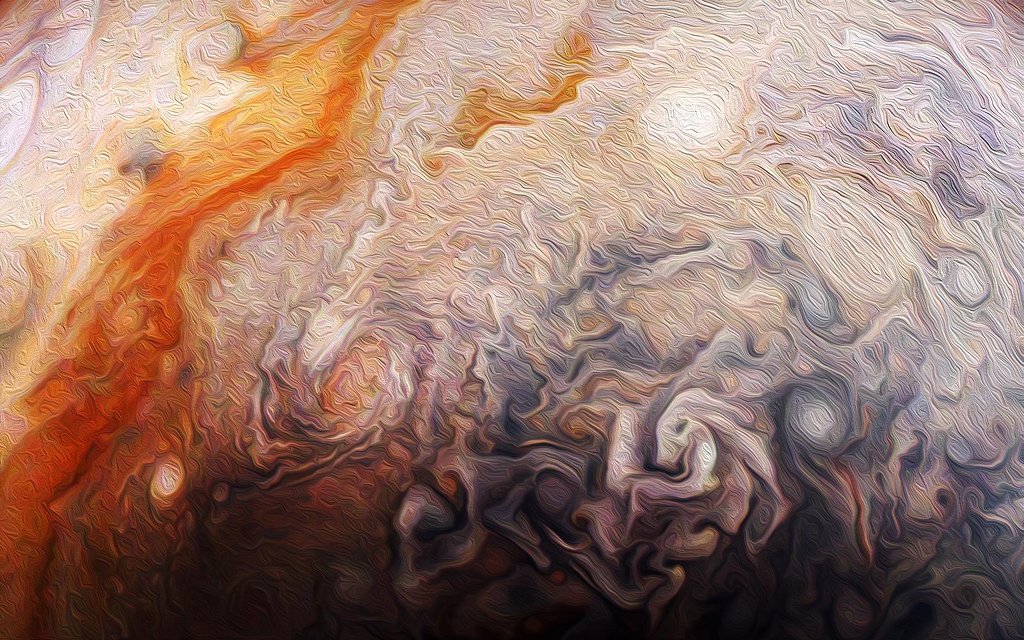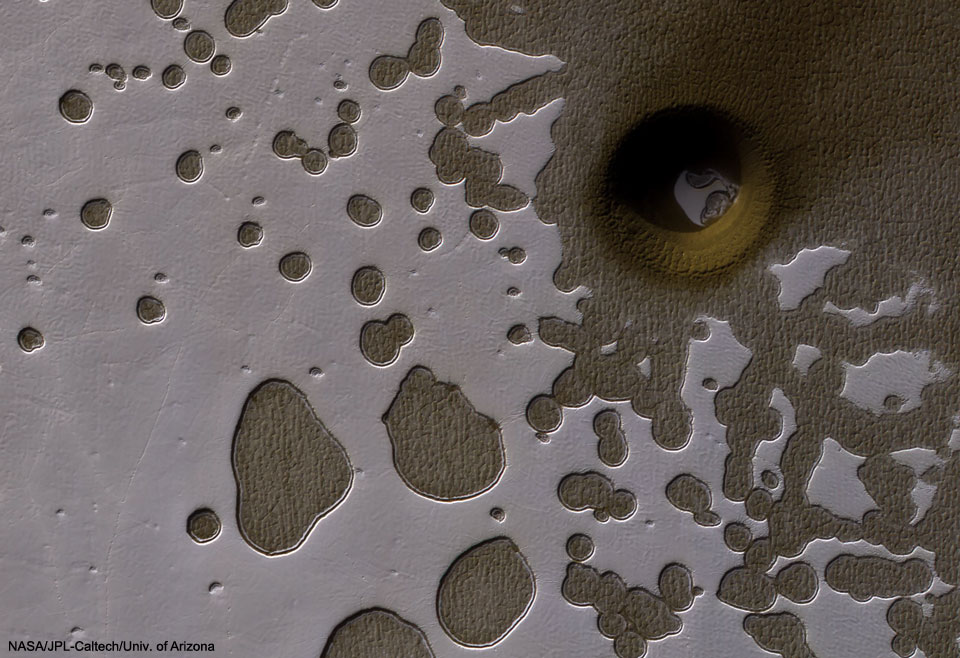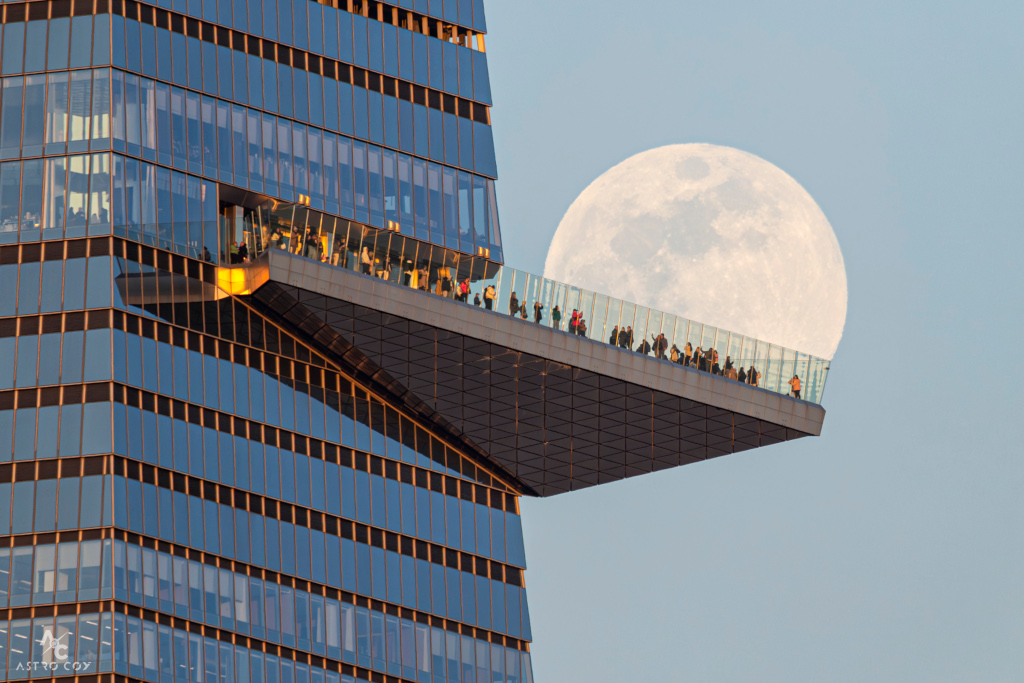Astronomy Picture of the Day
Discover the cosmos! Each day a different image or photograph of our fascinating universe is featured, along with a brief explanation written by a professional astronomer.
Image Credit & Copyright: Daniel Korona
Explanation: Sometimes, the sky itself seems to smile. A few days ago, visible over much of the world, an unusual superposition of our Moon with the planets Venus and Saturn created just such an iconic facial expression. Specifically, a crescent Moon appeared to make a happy face on the night sky when paired with seemingly nearby planets. Pictured is the scene as it appeared over Zacatecas, México, with distinctive Bufa Hill in the foreground. On the far right and farthest in the distance is the planet Saturn. Significantly closer and visible to Saturn's upper left is Venus, the brightest planet on the sky. Just above the central horizon is Earth's Moon in a waning crescent phase. To create this gigantic icon, the crescent moon phase must be smiling in the correct direction.
Tomorrow's picture: Mercury's messenger
Authors & editors: Robert Nemiroff (MTU) & Jerry Bonnell (UMCP)
NASA Official: Amber Straughn Specific rights apply.
NASA Web Privacy, Accessibility, Notices;
A service of: ASD at NASA / GSFC,
NASA Science Activation
& Michigan Tech. U.
This is an automated email. If you notice any problems, just send me a note at gtracy@gmail.com. You can add and remove email addresses to this distribution list here, https://apodemail.org.Unsubscribe
